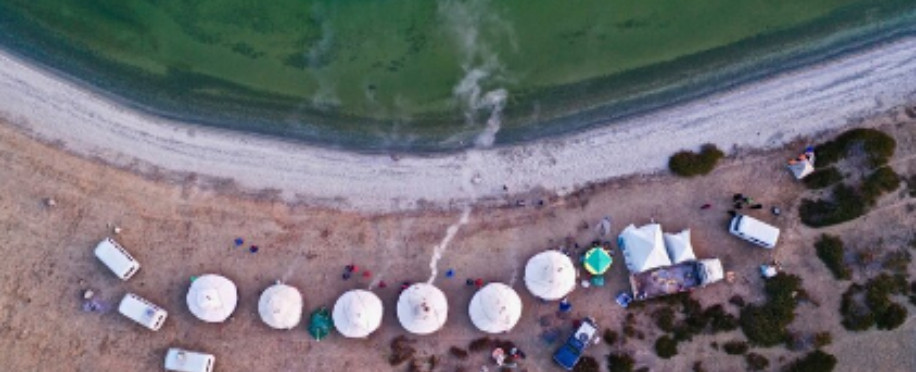Copyright © 2025 lmitac.com All Rights Reserved. Contact - Terms and Conditions - Privacy Policy - Quality Policy - Become an instructor - Vacancies - Sitemap
London Maritime Academy is a trade name for London Premier Groupversion: 2.9.0
London Maritime Academy is a trade name for London Premier Group

Posted on : 4/4/2024, 10:43:49 PM
Our coasts are important ecosystems and generous land sources for both economy and leisure. Similarly, these ecosystems are constantly influenced by natural factors and are negatively subjected to human interference. Coastal management techniques are how we create balance in these precious environments.
In this article, we will examine the techniques employed in coastal management to safeguard the shorelines we have come to love.
Building walls across the coastline, constructing artificial structures to control or alter the maritime world for human benefit—all these processes, although designed to serve our interests, are extremely harmful to both the environment and the ecosystem.
Even though nature is resilient and the shore naturally adapts to our offensive behaviour, the consequences are severe.
How do we protect our coast while still maintaining our industry? Is it even possible to manage? Yes, indeed it is, through these innovative coastal management techniques:
One of the most popular methods of managing coastal lands is beach nourishment. The process includes adding sediment to erodible beaches, restoring sand dunes, and re-creating natural shores. It not only increases recreational value but also offers more effective shielding from erosion by waves and storms.
Coastal erosion control through dune stabilisation is one of the key strategies of coastal management. The dunes are a potential defence mechanism, creating a natural barrier that protects communities from extreme winds and storm surges.
Through planting native species of dune grasses, such as sea oats or beach grass, dunes' ecological stability is ensured. Thus, erosion is prevented, and the integrity of the shoreline is maintained.

Sometimes, for the flood and erosion risks that are too high to control, the best solution is when the managed retreat approach is best. This strategy involves relocating buildings from the risky location that was previously built there and having the land simply return to its natural condition. Managing retreat, apart from minimising the chances of property damage, also helps us to adapt to the effects of climate change, which ultimately contributes to the well-being of coastal communities.
ICZM can be classified as a holistic mechanism which involves the entire coastal area in a balanced and integrated manner. It's a process where different players, such as local governments, communities, and environmental groups, work together. Social, economic, and ecological aspects are considered, and ICZM is responsible for sustainable development and safeguarding both natural and human resources along our coasts.
Apart from replacing artificial seawalls, the living shoreline technique uses natural elements such as native seeds, sand, and oyster reefs. Moreover, living shorelines help maintain coastlines and offer a system of shoreline stabilisation and protection against erosion. On the other hand, the environment is more important than infrastructure, and living shorelines can maintain the ecological function of coastal habitats while still helping to improve water quality. These constantly functioning ecosystems are the most critical habitats for fish, birds, and other species while absorbing wave energy.
Bioshielding, also known as soft engineering, employs natural or nature-based methods of managing coastlands, unlike defenses that rely only on hard walls. These approaches may include marsh creation, beach dewatering and renourishment, and offshore reef systems. Moreover, these methods, which are nature-friendly, help reduce flooding, habitat connectivity, and wildlife diversity enhancement. Additionally, they are of great recreational worth.
Sometimes, theoretical knowledge is not enough, and you need a practical adaptation of the theoretical material; here's a guide to how you can do that:
Carry out an extensive coastal assessment to understand this field's specific requirements and threats. Identify such areas, including the erosion patterns and priority habitats, which will be considered to select the proper management techniques and make effective initiatives.
Design a Long-Term Strategy using innovative approaches driven by the central idea of the coastal area. Take climate change effects into consideration and use future sea-level projections to deal with the current and anticipated state.
Rely on the expertise of coastal professionals such as scientists, engineers and environmental consultants. Their expert insight will assist in the future decision-making process of adopting innovative methods, applying best practices guided by scientific principles, and protecting the environment. Take Coastal environment training courses for more concrete knowledge of your field.
Monitor the performance of the implemented techniques regularly and adjust accordingly. Evaluate their effectiveness and make proper modifications to build lasting resilience and achievements. Monitor the changes in sediment erosion, water turbidity, decline in biodiversity and shoreline conditions.
The ongoing development of coastal management provides an array of inherent innovative techniques that would change not only how we maintain and protect coastal ecosystems but also how we orientate their functions. Embracing these innovations helps build shoreline resilience, ensures biodiversity, and encourages a sustainable coexistence of human activities with delicate coastal ecosystems.